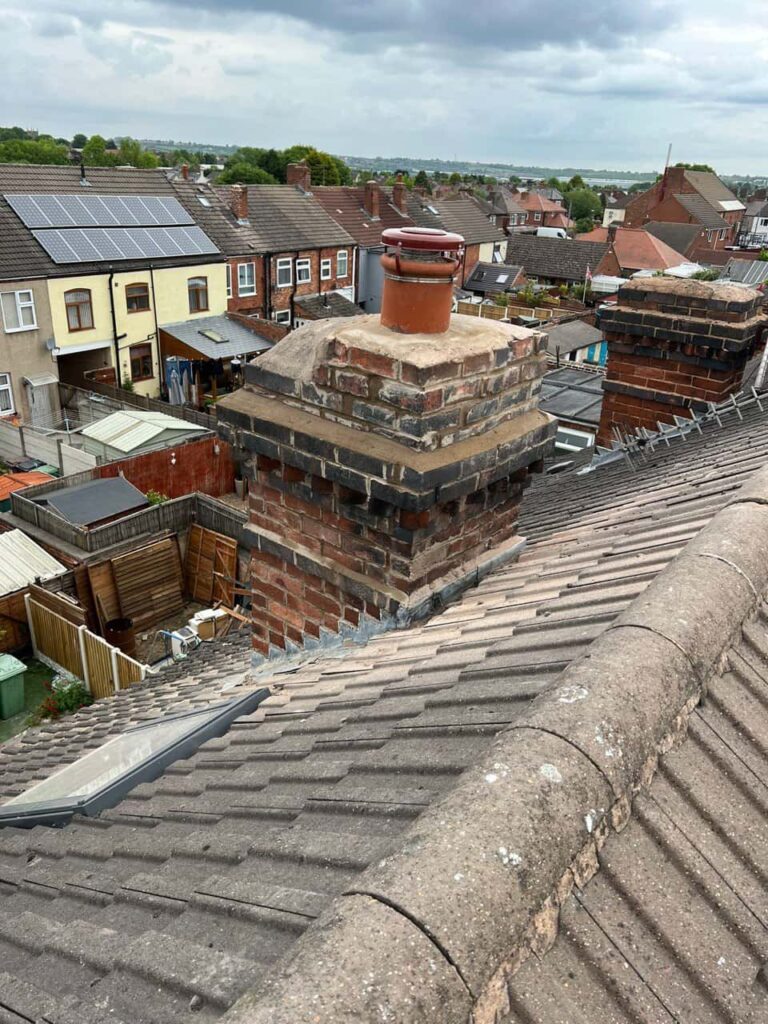Discovering a mysterious leak in your ceiling is never a welcome surprise. Whether it appears as a small discoloured patch or a steady drip during heavy rain, it’s a sign that something isn’t quite right above. Pinpointing the cause can be frustrating, especially when the source isn’t immediately obvious. At Sudbury Roofing Repairs, we assist homeowners across Sudbury, Suffolk with locating and resolving elusive roof leaks before they cause long-term damage.
Understanding the common causes of ceiling leaks—and how to trace them effectively—can save you both time and money.
Why Leaks Aren’t Always Where They Appear
Water has a way of travelling through structural materials, making it difficult to identify the exact origin of a leak just by observing the internal ceiling damage. A patch on the ceiling could originate from a point several feet away on the roof or even from another part of the building altogether.
Factors that can complicate leak detection:
- Water travels along roof timbers, plasterboard, or insulation
- The source may be intermittent, only leaking during specific weather conditions
- Multiple small issues may appear as a single internal leak
- Older repairs may have concealed or redirected water flow
This is why a professional inspection is usually required to identify the root cause accurately.
Common Sources of Roof Leaks
At Sudbury Roofing Repairs, we’ve encountered a wide range of issues causing interior leaks throughout properties in Sudbury, Suffolk. While every roof is different, the following are some of the most common culprits.
1. Damaged or Missing Roof Tiles
Cracked, broken, or missing tiles allow rainwater to penetrate the roof covering. Once the protective layer is compromised, water can easily travel down into the ceiling space.
- Often caused by storm damage or ageing materials
- May only leak during wind-driven rain
- Usually visible with a roof-level inspection
2. Faulty Flashings
Flashings are the thin metal or lead sheets that seal the joins around chimneys, skylights, dormers, or roof junctions. If they lift, corrode, or deteriorate, water will find its way in.
- Chimney flashings are a frequent problem area
- Loose flashing may not be noticeable from ground level
- Proper sealing is essential for weatherproofing
3. Blocked Gutters or Downpipes
Overflowing gutters or downpipes can force water back onto the roof or into wall cavities, where it slowly seeps inside and appears as a ceiling leak.
- May cause damp patches on ceilings near the edge of the house
- Can lead to rot in the roofline timber and soffits
- Simple to fix but often overlooked
4. Damaged Roof Felt or Underlay
Beneath the tiles, the felt or membrane provides a second layer of protection. If this becomes torn, sagged, or perished, water can easily pass through.
- Often only visible during a full roof inspection
- Common in older properties with ageing felt
- May require partial re-roofing for long-term reliability
5. Issues with Roof Valleys or Gulleys
These are the channels where two roof slopes meet and direct rainwater to the gutters. If the valley becomes blocked, damaged, or improperly sealed, leaks can occur along its path.
- Can result in isolated leaks far from the actual valley
- Leaves, moss, or debris often contribute to blockages
- Requires careful maintenance to function correctly
6. Condensation and Ventilation Problems
Sometimes what appears to be a leak may be condensation caused by poor loft ventilation. Moisture builds up in the roof space and drips down, particularly in cold weather.
- Look for mould, damp insulation, or musty smells
- Ventilation upgrades can often resolve the issue
- Particularly common in homes with unvented loft conversions
Steps to Identify the Leak Source
If you’ve noticed a leak or damp patch on your ceiling, it’s important to act quickly to limit damage.
Recommended steps:
- Note the location and size of the leak – Is it near an external wall, chimney, or pipework?
- Observe when the leak occurs – Does it only happen during heavy rain or at certain times of year?
- Check loft space (if safe) – Look for damp timbers, discoloured insulation, or water trails
- Look outside for obvious tile or gutter issues – Use binoculars or a drone if possible, but never climb onto the roof yourself
- Call a professional roofing contractor – At Sudbury Roofing Repairs, we provide detailed roof inspections to locate the precise issue and recommend the best solution
The Importance of Prompt Repair
A ceiling leak left unresolved can lead to:
- Rotting timbers and compromised roof structure
- Damaged plasterboard and interior décor
- Mould growth that affects indoor air quality
- Increased repair costs over time
By dealing with the issue promptly, you reduce the risk of extensive internal damage and preserve the integrity of your property.
Conclusion
A mysterious ceiling leak may seem minor at first, but it’s often a warning sign of a more serious problem with your roof. From broken tiles to faulty flashings or poor ventilation, the causes can be varied—but the solution starts with a proper diagnosis.
If you’ve spotted signs of a ceiling leak in your home, contact Sudbury Roofing Repairs. Serving homeowners throughout Sudbury, Suffolk, we offer expert inspections, honest advice, and dependable repair work to restore your roof and protect your home.
Call us on: 01787 326 696
Click here to find out more about Sudbury Roofing Repairs
Click here to complete our contact form and see how we can help with your roofing needs.

